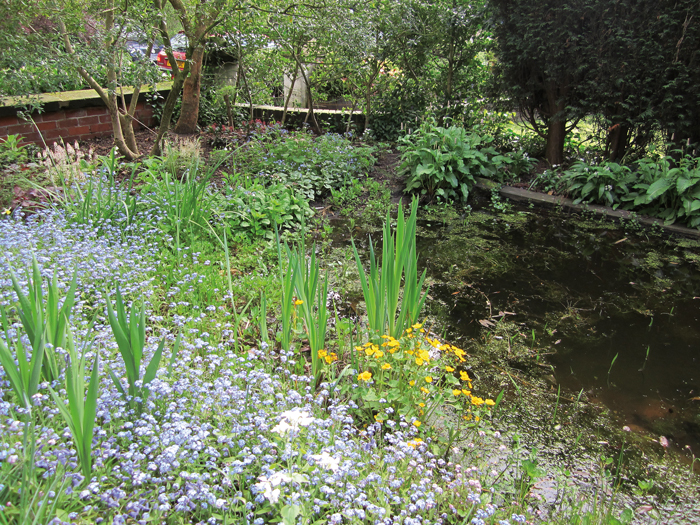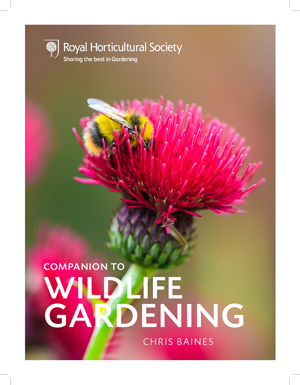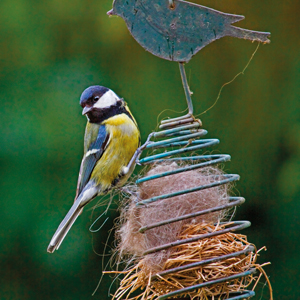RHS Companion to Wildlife Gardening
 The first edition of the ‘RHS Companion to Wildlife Gardening’ by Chris Baines, launched at the Chelsea Flower Show in 1985, became a best-seller. Wildlife has now become an even greater mainstream issue for gardeners and the public since that first edition was launched and so it is welcome news that an updated and freshly illustrated edition has now been published.
The first edition of the ‘RHS Companion to Wildlife Gardening’ by Chris Baines, launched at the Chelsea Flower Show in 1985, became a best-seller. Wildlife has now become an even greater mainstream issue for gardeners and the public since that first edition was launched and so it is welcome news that an updated and freshly illustrated edition has now been published.
This new edition highlights the changes in garden wildlife over the past 30 years and incorporates RHS research, updates and best practice as well as addressing a multitude of controversial conversation issues. There is practical advice to help gardeners choose plants for bees, birds and butterflies and useful projects such as how to build a wildlife pond or where to position nesting boxes.
 At the time of its first publication, Wildlife Gardening drew attention to habitat destruction and led the field in encouraging wildlife in our gardens. Today, it is still as relevant and important with the new edition having the added value of the latest research.
At the time of its first publication, Wildlife Gardening drew attention to habitat destruction and led the field in encouraging wildlife in our gardens. Today, it is still as relevant and important with the new edition having the added value of the latest research.
Gardeners play an increasingly important role in nature conservation. The gardens of any town or village combine to create a rich and diverse network of wildlife habitats. Our lawns, hedges and flower borders, vegetable patches and fruit trees are all important and the author shows how wildlife gardening can make a stylish and enjoyable contribution to the environment.
The book is divided into four parts with the first section looking at the reasoning behind making a wildlife garden. The second part deals with creating new habitats before moving onto the third part dealing with supplementing habitats. The final section details useful addresses and indexes.
 As the author points out in the book, we don’t have time for back-tracking compromise pointing to statistics such as the destruction of our meadows which has risen to 98% in 50 years; the 10% of our Sites of Special Scientific Interest being damaged every year and threats to species of butterflies, dragonflies, wildflowers and bats, all threatened with immediate extinction. For Baines, we are in a green revolution and that revolution begins with you and me and can start in our gardens.
As the author points out in the book, we don’t have time for back-tracking compromise pointing to statistics such as the destruction of our meadows which has risen to 98% in 50 years; the 10% of our Sites of Special Scientific Interest being damaged every year and threats to species of butterflies, dragonflies, wildflowers and bats, all threatened with immediate extinction. For Baines, we are in a green revolution and that revolution begins with you and me and can start in our gardens.
The book is delightfully illustrated and is packed with information and ideas for plants covering all kinds of habitats from woodland, lawns and wildflower meadows to ponds, wetlands and cottage gardens.
New gardeners will be inspired by this book and it will also delight the very many owners of the best selling original. I found it inspirational and full of common sense.
Chris Baines is one of the UK’s foremost wildlife gardening experts. He has the benefit of a multifaceted career as a landscape architect, advisor to industry and government, teacher, writer and broadcaster, but the common theme that runs through all his work is his concern for wildlife. He is National Vice President of the Royal Society of Wildlife Trust and a passionate campaigner for easy access to nature.
More than ever before we need to be aware of how we, as gardeners, can help wildlife and this authoritative book will certainly continue to lead the way and should find a space on every bookshelf. What I liked especially about the author’s approach is his balance between making us aware of the problems and his suggestions and advice for doing something about conservation in a practical and sensible way.
‘RHS Companion to Wildlife Gardening’ by Chris Baines is published by Frances Lincoln – www.franceslincoln.com – and will be on sale from 1st September 2016.
Photo credits: ©Chris Baines (banner), ©Alamy/Arterra Picture Library (pictured right).

